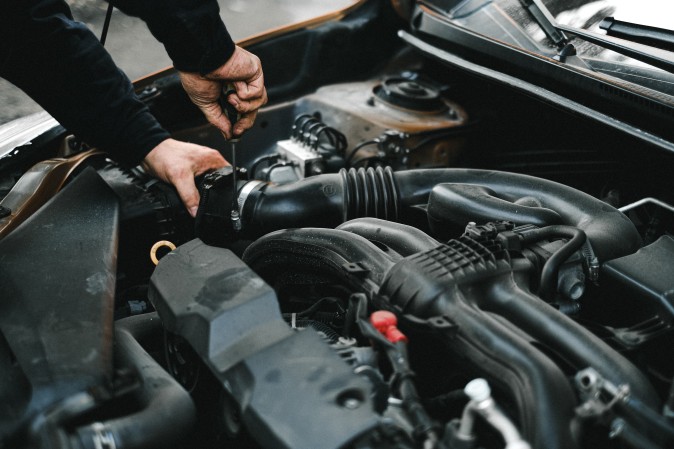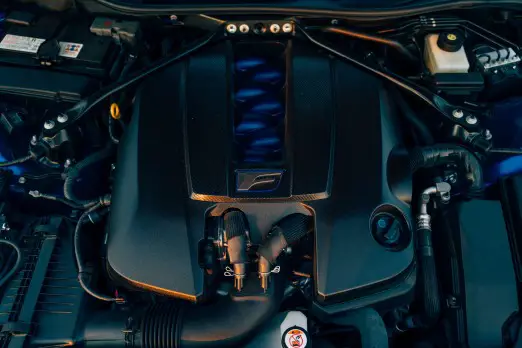In the complex mechanism of automobiles, gear oil is the unsung hero that keeps everything running smoothly and transfers power effectively throughout the engine. A recurrent discussion arises when engineers and car enthusiasts explore the subtleties of gear lubrication: whether gear oil is better, 75W85 or 75W90. When it comes to striking the right balance between maximum performance and gear longevity, these two viscosity classes are critical decision points for technicians and car owners.
Significance of choosing the right gear oil for optimal performance:
The importance of choosing the correct gear oil goes beyond the standard maintenance schedule; it is a crucial factor in determining the lifespan and typical performance of a car. The lifeblood of the differential and gearbox systems is gear oil, which keeps the gears meshing smoothly, dispersing heat, cutting down on friction, and preventing wear and tear. Selecting between 75W85 and 75W90 is like choosing the best conductor for a symphony—each has a specific function in balancing the mechanical parts. Selecting the right gear oil has a significant impact on fuel economy, gear responsiveness, drivetrain robustness, and power gearbox efficiency.

Understanding Viscosity Grades:
A. Explanation of SAE (Society of Automotive Engineers) Viscosity Grading:
- Significance of the “75”: The oil’s flow properties at various temperatures are indicated by the numerical numbers in the SAE viscosity grading system. Lower numbers imply better flow in cold situations. In the instance of 75W85 and 75W90, the “75” denotes the viscosity at low temperatures.
- The “W” in Viscosity Grade: The “W” represents winter and denotes how well the oil works in lower temperatures. It is not a symbol of weight, despite popular assumption. In colder weather, the better the oil flows the lower the W number.
B. Differentiating Between 75W85 and 75W90:
- Viscosity Range of 75W85:
- The flow of oil at lower temperatures is shown by the “75”.
- At 100°C, the viscosity usually falls within a certain range.
- Perfect for uses where smoother cold beginnings necessitate a lower viscosity.
- Viscosity Range of 75W90:
- The performance at low temperatures is shown by the “75”.
- Compared to 75W85, viscosity at 100°C is within a different range.
- Ideal for uses where a little bit more viscosity is acceptable, this material offers superior protection while bearing large loads.
- Effects of Viscosity on Lubrication and Temperature Stability:
- How viscosity affects lubricating film production.
- the effect of viscosity on metal-to-metal contact avoidance and temperature stability.
Performance in Different Operating Conditions:
A. Cold Weather Performance:
- How Does 75W85 Perform in Cold Temperatures?
- Better fluidity is possible at cold starts because of the decreased viscosity.
- Improved flow characteristics allow gears to engage more smoothly in freezing weather.
- Perfect for areas with lower temperatures, minimizing wear in the early going.
- How Does 75W90 Fare in Cold Weather?
- more viscous than 75W85, which affects how it behaves in colder climates.
- While still intended to provide dependable cold-start performance, it can react differently than a 75W85.
- Takeaways for regions with warmer winter climates.

B. High-Temperature Stability:
- Thermal Stability of 75W85:
- The capacity of the oil to keep its lubricating qualities and viscosity at elevated temperatures.Ideal for situations in which the differential or gearbox operates at a feverish temperature.
- Potential benefits in demanding or performance-focused environments.
- Thermal Stability of 75W90:
- Aiming for a higher viscosity range, 75W90 is meant to deliver robust performance at elevated temperatures.
- Ideal for uses requiring heavy lifting, hauling, or continuous high-speed operation.
- Considering cars whose enhanced performance results in higher heat production.
C. Impact on Fuel Efficiency:
- Relationship Between Viscosity and Fuel Efficiency:
- The impact of fuel consumption and mechanical efficiency on the viscosity of gear oil.
- The possible effects of selecting between 75W85 and 75W90 on a car’s total fuel economy.
- weighing the possible trade-offs in fuel efficiency against the requirement for reduced viscosity in freezing weather.
Gear Compatibility and Applications:
A. Compatibility with Different Types of Gears:
- Transmission Gears:
- Analysis of the interactions between gearbox gears and 75W85 and 75W90.
- Considering sliding gears, bearings, and synchronizers in manual gearboxes.
- effect on overall gearbox performance and the smoothness of shifting.
- Differential Gears:
- Investigation of the function of gear oil in differential gear protection.Hypoid gears and limited-slip differentials are discussed.
- The significance of appropriate lubrication in mitigating wear and guaranteeing optimal power distribution.
B. Suitable Applications for 75W85:
- Specific Vehicle Types or Models:
- An examination of the kinds of vehicles that profit from 75W85 properties.
- Small cars, certain manual gearboxes, or automobiles with manufacturer guidelines should all be considered.
- situations where reduced viscosity improves performance in cold temperatures and fuel economy.
- Performance-Oriented Applications:
- a discussion of the conditions under which 75W85 works best in racing or high-performance applications.
- Benefits of faster fluid flow and less internal friction under dynamic driving circumstances are considered.
- weighing the benefits against any trade-offs in situations involving heavy lifting.
C. Suitable Applications for 75W90:
- Common Uses in Various Vehicles:
- examination of cars that are frequently fitted with or advised to use 75W90 gear oil.
- Considering bigger cars, trucks, and SUVs that have gearboxes and differentials that work better with more viscosity.
- Use in situations when having more load-bearing capacity is essential.
- Heavy-Duty Applications:
- An examination of circumstances in which 75W90 offers improved protection when carrying large weights.
- Considering off-road driving, towing, and other situations when the gears are put under more strain.
- weighing any potential effects on fuel economy against the possibility of increased durability.

Wear Protection and Longevity:
A. Additives and Their Role in Wear Protection:
- Anti-Wear Additives:
- investigation of the anti-wear chemicals found in 75W85 and 75W90.
- Their function in creating protective coatings on gear surfaces is discussed.
- These compounds lessen wear and minimize metal-to-metal contact.
- Extreme Pressure (EP) Additives:
- Analysis of EP additives intended to withstand high-pressure settings.
- significant in heavy-duty situations like off-road driving and hauling.
- weighing the necessity of EP additives against any potential environmental effect concerns.
B. Longevity of Gears with 75W85:
- Wear Characteristics:
- Evaluation of the wear trends connected to 75W85 usage.
- Considering variables like load-bearing capability, heat production, and friction.
- case studies or real-world instances showing how long gears last in normal driving circumstances.
- Maintenance Recommendations:
- Recommended 75W85 replacement intervals to provide the best performance.
- wear or deterioration indicators that point to the necessity for changing the gear oil.
- The significance of routine maintenance in optimizing the longevity of gears.
C. Longevity of Gears with 75W90:
- Wear Resistance Under Heavy Loads:
- Examination of the 75W90’s performance under harsh circumstances or with large loads.
- Considering how well it can withstand wear during prolonged high-speed use.
- Wear pattern comparison with 75W85 under comparable circumstances.
- Maintenance Guidelines:
- Recommended change intervals for 75W90 in consideration of its higher viscosity.
- Indicators signaling the need for a gear oil change, especially in high-stress applications.
- Strategies for optimizing the longevity of gears when using 75W90.
Maintenance Considerations:
A. Recommended Change Intervals for 75W85:
- General Guidelines:
- examination of recommended changes for 75W85 gear oil according to industry standards.
- Variations in temperature, load, and driving conditions are some of the factors that affect change intervals.
- the significance of following manufacturer instructions for certain automobiles.
- Signs It is Time to Change:
- recognizing the main warning signs of failing gear oil.
- signs of contamination or wear that indicate a change is necessary.
- The function of routine inspections in preventing problems before they arise.
B. Recommended Change Intervals for 75W90:
- Considerations for Higher Viscosity:
- Talk about the potential effects of 75W90’s increased viscosity on change intervals.
- the effect of harsh environments or heavy use on suggested maintenance schedules.
- striking a balance between the need for regular oil changes and the advantages of lifespan.
- Monitoring Gear Health:
- taking proactive steps to keep an eye on the condition of the equipment.
- Using fluid analysis and periodic inspections to evaluate 75W90’s state.
- Real-world examples exhibit conditions that may increase wear and demand more frequent replacements.
C. Signs That It is Time to Change Gear Oil:
- Visual and Olfactory Inspection:
- How to visually check gear oil for deterioration or contamination.
- identifying odd hues, textures, or smells that might point to a problem.
- The significance of routine inspections in avoiding gear system malfunctions.
- Performance Indicators:
- recognizing shifts in gear performance as a precursor to danger.
- symptoms include heightened loudness, jerky movement, or decreased effectiveness.
- connecting foreseeable problems with the quality of gear oil to variations in performance.
Cost Considerations:
A. Price Difference Between 75W85 and 75W90:
- Comparative Analysis:
- Analysis of the difference in price of gear oils with 75W85 and 75W90.
- Many variables, such as brand reputation, additives, and production techniques, affect price fluctuation.
- How pricing discrepancies could affect how car owners or maintenance personnel make decisions.
- Economic Factors:
- Economic aspects that influence the price of raw materials in gear oil manufacturing are considered.
- External variables that affect the cost of both kinds of gear oils include market demand and geopolitical developments.
- The impact of manufacturer rivalry on product pricing.
B. Cost-Effectiveness in the Long Run:
Consideration is given to economic factors that affect the cost of raw materials used in gear oil production. The cost of both types of gear oils is influenced by external factors such as changes in geopolitics and market demand.
- Balancing Initial Cost with Performance:
- examination of the potential long-term savings associated with a particular gear oil type’s greater initial cost.evaluating cost-effectiveness by taking wear protection, fuel economy, and maintenance intervals into account.
- Case studies or actual situations that demonstrate the financial effects of selecting one oil over another.
Frequently asked questions:
Can I substitute 75W90 gear oil with 75W85?
It is feasible to replace 75W90 gear oil with 75W85, but it is important to check the requirements of your vehicle and speak with professionals. The variation in viscosity might have an impact on load-carrying capacity and performance at elevated temperatures.
What is the purpose of 75W85 gear oil?
75W85 gear oil performs well in chilly weather conditions and remains stable in warmer climates by protecting and lubricating differential and gearbox gears.
What is the purpose of 75W90 gear oil?
The differential and gearbox gears are meant to be lubricated and protected by 75W90 gear oil. Its viscosity grade of 75W90 suggests it may function effectively in hot and cold environments.
How viscous is 75W85?
The gear oil with the 75W85 designation has a moderate viscosity, and the “75” stands for its low-temperature flow properties.
Conclusion:
In summary, selecting between 75W85 and 75W90 gear oils is a complex issue that necessitates carefully weighing the unique requirements and operating circumstances of a vehicle. Each oil has unique viscosity properties that affect fuel economy, stability at feverish temperatures, and performance in freezing conditions. The process of making decisions is further complicated by maintenance factors, such as suggested change intervals and wear indicators. It is important to strike a balance between these aspects, financial concerns, and practical experiences from professionals and users alike. In the end, the best option will rely on personal driving preferences, the kind of car, and the ideal trade-off between performance and cost.

